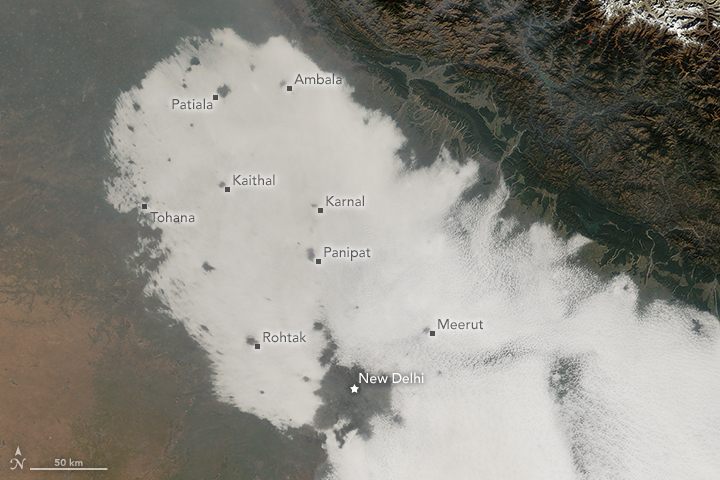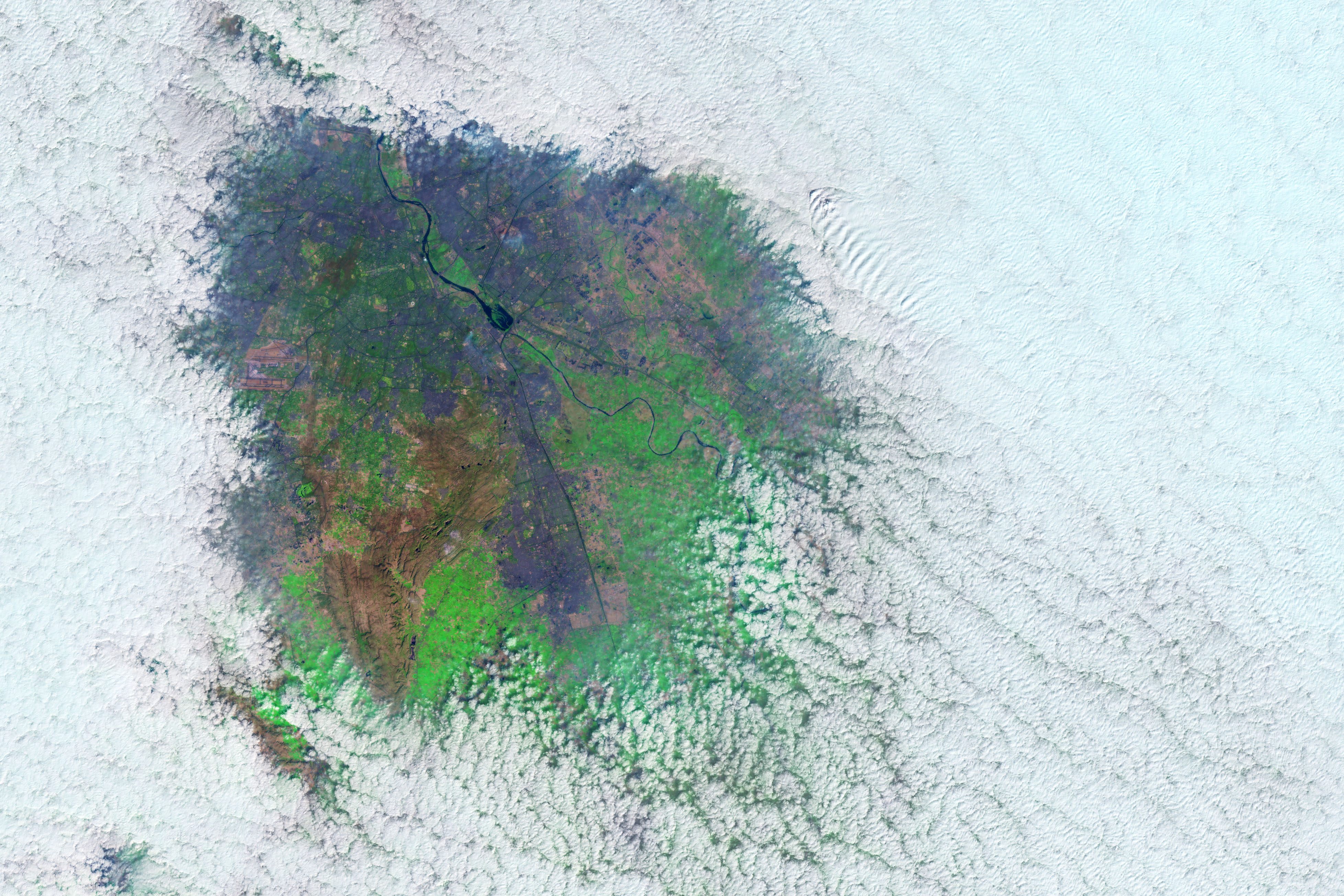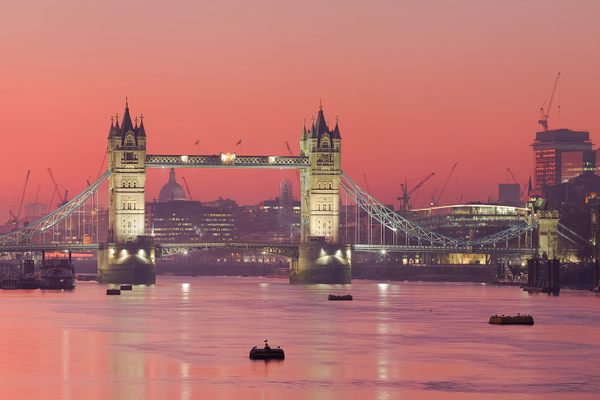The Mystery of the Fog Holes That Form Over Cities
Satellites captured a strange phenomenon in foggy places across the world.

In the winter months, thick fog forms over the plains that stretch south of the Himalayas, through Pakistan, India, Nepal, and Bangladesh. Visibility can be so limited that it’s impossible to see more than 10 or 20 feet ahead, which means planes stay on the ground and even rail travel slows to a crawl.
Ritesh Gautam, a climate scientist who works for the Environmental Defense Fund, first started studying the formation of fog in order to understand the ways in which air pollution was making it worse. But during his research, he noticed another strange phenomenon: Holes, dramatic enough that they show up in satellite imagery, would form in the thick fog directly over cities.
The cause of these fog holes was a mystery, but Gautam and other scientists suspected that they could be caused by the heat trapped in urban landscapes, which makes city temperatures hotter than those in the surrounding area. In a new paper, published in Geophysical Research Letters, Gautam and a team of colleagues outline the relationship between cities and these mysterious fog holes. By looking at 17 years of satellite data, capturing fog holes in California, Europe, South Asia, and China, they found a clear connection between the size of cities and the size of these gaps in the fog.

There are a few different types of fog, but the thick layers that form over these plains occur when the air in the lower atmosphere cools and becomes saturated with moisture. Air pollution can hasten and intensify fog formation, as moisture condenses around the particles hanging out in the air.
Cities tend to create more pollution, so it’s surprising to see holes in the fog there. But cities also trap heat more effectively than the areas around them, which are usually greener. They get hotter during the day and cool down more slowly at night. This well-documented “urban heat island effect,” Gautam and his colleagues write, can also speed the dissipation of fog. Fog forms overnight, but by the late morning holes appear over cities, while the fog still lingers in the surrounding area.
“It’s almost like a Faustian bargain,” says Gautam. “You have pollution increasing the fog, but the urbanization is increasing and making the fog less frequent.”

In the paper, he and his colleagues looked at the size of 13 different cities along with the area of the fog holes, and found a remarkable correlation. “The shape of the fog hole almost coincides one-to-one with the city boundaries and the size of the city,” he says.
It’s rare to get a result this clear in science. But the relationship here is strong: The larger the city, the larger the fog hole. Of the cities examined in the study, the largest fog holes appeared over New Delhi, with surprising frequency. Compared to the surrounding area, Delhi has 50 percent fewer foggy days. Sometimes the fog wouldn’t show up in the city at all. “We’re not just finding the fog is dissipating faster, but that it’s not even forming,” Gautam says.
While clear days might be preferable to foggy days, these fog holes are one more example of how human beings are changing the patterns of the planet in unprecedented ways. In the densely populated plains of South Asia, with quickly growing cities, that seasonal blanket of fog will only become more pockmarked over time.










Follow us on Twitter to get the latest on the world's hidden wonders.
Like us on Facebook to get the latest on the world's hidden wonders.
Follow us on Twitter Like us on Facebook